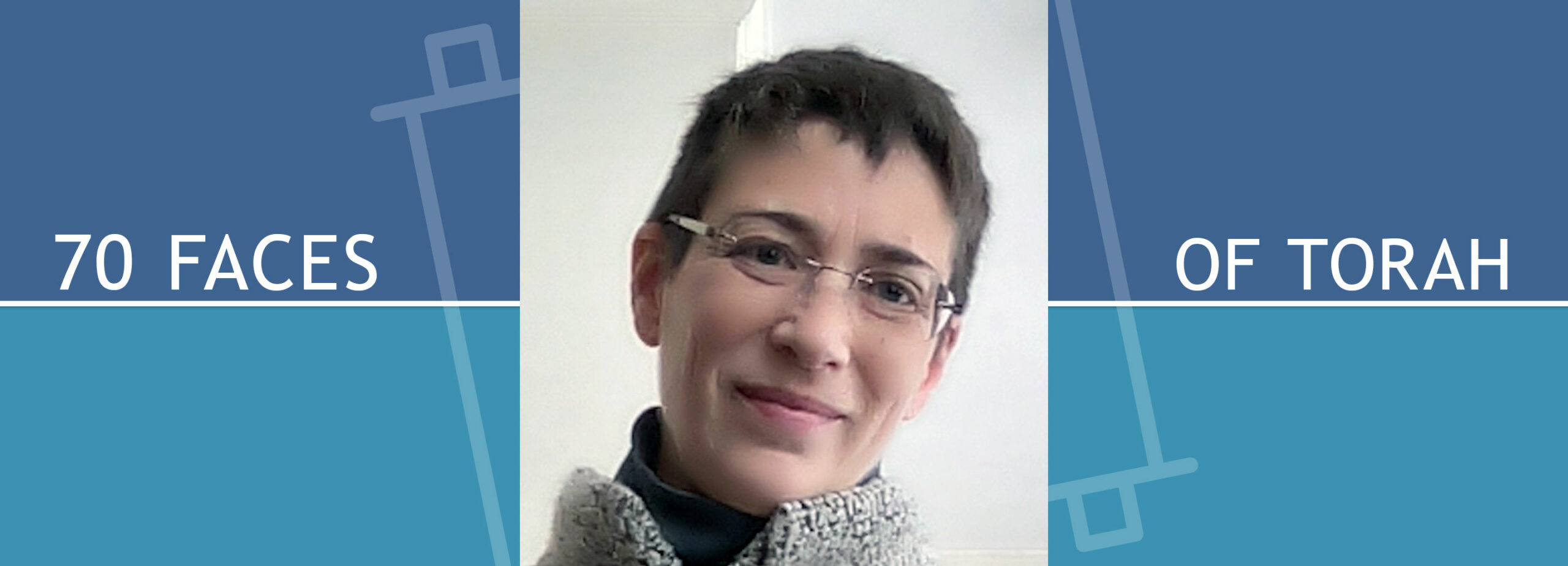Exodus The Light that Remains

Tetzaveh and Shushan Purim (Exodus 27:20 – 30:10)
Some years ago, following a particularly magnificent performance, I found myself in my center-balcony seat of a Broadway theatre, holding my breath. The show had long since ended, but I didn’t move. I was magicked into rapturous submission, couldn’t bear to break the spell.
Minutes passed.
Stagehands scurried here and there, moving props offstage, sweeping the floor, resetting furniture for the next performance. Slowly the energy settled, and a single, black-clad figure brought out a portable light stand with a bare bulb in a wire cage, setting it downstage center.
The ghost light.
Traditionally placed at the lip of the stage between performances, the ghost light is a safety feature, a superstition, and an instrument of pure enchantment for those who know about it.
In the opening verse of T’tzaveh, the parsha we study this week, Gd gives Moshe some instructions to pass along to the Israelites.
וְאַתָּה תְּצַוֶּה אֶת־בְּנֵי יִשְׂרָאֵל וְיִקְחוּ אֵלֶיךָ שֶׁמֶן זַיִת זָךְ כָּתִית לַמָּאוֹר לְהַעֲלֹת נֵר תָּמִיד׃
And you shall command the children of Israel to bring you beaten olive oil for lighting, to raise up a Ner Tamid. (Exodus 27:20)
Nowadays, we understand the phrase Ner Tamid to mean Eternal Flame; we can picture the decorative lamp that adorns the Ark in our synagogues. Similar to the theatre’s ghost light, the Ner Tamid holds the holy space of the bimah in light. Whether the sanctuary is filled with worshippers or whether it is empty—hollowed out by disaster, neglect, or simply the rhythms of the week—the Ner Tamid glimmers and waits for us like a faithful friend.
Yet the word תָּמִיד (tamid) is a slippery one, encompassing both constancy and regularity. In its constancy, it can refer to that lamp that burns perpetually above the sacred space of the Torah scrolls, something that never falters or fades. And in its regularity, it can refer also to the Israelites’ everyday sacrifices in the ancient world, the temidin: quotidian obligations, at prescribed intervals of time, no less sacred for their everyday-ness. Indeed, some interpreters of Exodus 27:20 lean more into the regular side of tamid, referring not to eternal flame but instead to kindling lamps regularly.
The twelfth-century Spanish Rabbi Abraham ben Meir Ibn Ezra illuminates the contradiction:
וטעם תמיד. כל לילה ולילה. ויש מלת תמיד קשה מזאת. והיה על מצחו תמיד. כאשר הושם המצנפת על ראשו לעולם ישימו עליה ציץ הקדש:
The essence of tamid. [Here it means] each and every night. Also there is [elsewhere] a tamid usage much stronger than that. “And it was on his brow always.” (Exodus 29:38) When the priestly turban was placed on [Aaron’s] head, they always put the holy adornment on it. [emphasis mine]
Ibn Ezra’s comment points the way to a dual understanding of tamid, showing the qualities of intermittency (each and every) and constancy (always). Tamid can describe a thing that continues and a thing that pauses, both at once. Like light itself, tamid is wave and particle. Particle and wave. And in both meanings, there is something to rely on, something that continues, even when interrupted.
One year ago this week, by the Hebrew calendar, came a singular, terrible interruption. The day after Purim, we got the announcement that in response to the growing health crisis the campus would be closing immediately for an undetermined length of time. We said goodbye to our old everyday life and entered a parallel universe.
That day, my fellow students and I cleaned out our cubbies in a mood that was equal parts fog and frenzy. Skittish about hugs in the dawning age of social distancing, we helped one another load up our cars and said l’hitra’ot. I had a hard time actually leaving, and found myself wandering around the building in a misty-eyed daze, handing out granola bars from my mishloach manot.
On this yahrzeit of the pre-pandemic world, I am reflecting deeply on that interruption: on what has changed and what has held steady, the intermittent and the constant. On the waves and particles of life.
For even as so many things feel irretrievable, there is much that remains to us. Our community, our tradition, the joy of learning—all that represents the light and presence of the Divine—is still there. Even when we can’t see it. Like the ghost lights that continue to illuminate the theatres of Broadway during this time of extended closure, the Source of Life stays with us through this time of bewilderment and dread, offering glimmers of sustenance and hope.
Naomi Gurt Lind has been an opera singer, a synagogue executive and a stay-at-home mother, and is currently in Shanah Aleph at the Rabbinical School of Hebrew College. In addition to her studies, Naomi sings with the Zamir Chorale, serves on the LimmudBoston Board of Directors, and volunteers at JCDS, Boston’s Jewish Community Day School. When she has a free moment, she enjoys solving crossword puzzles (in pencil!), writing divrei Torah on her blog Jewish Themes, and spending time with her hilarious and delightful children.

